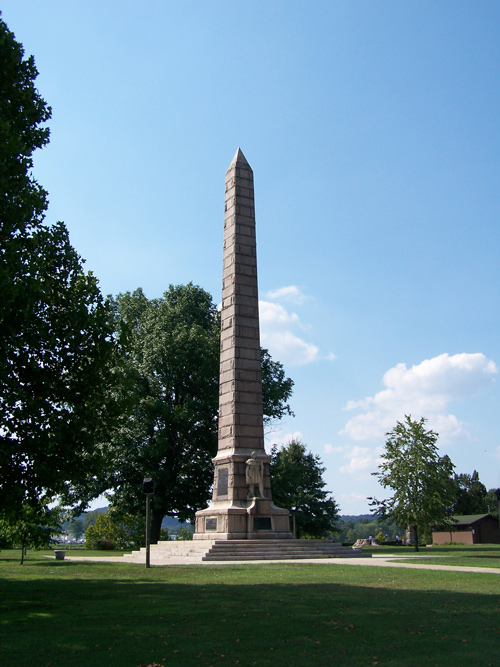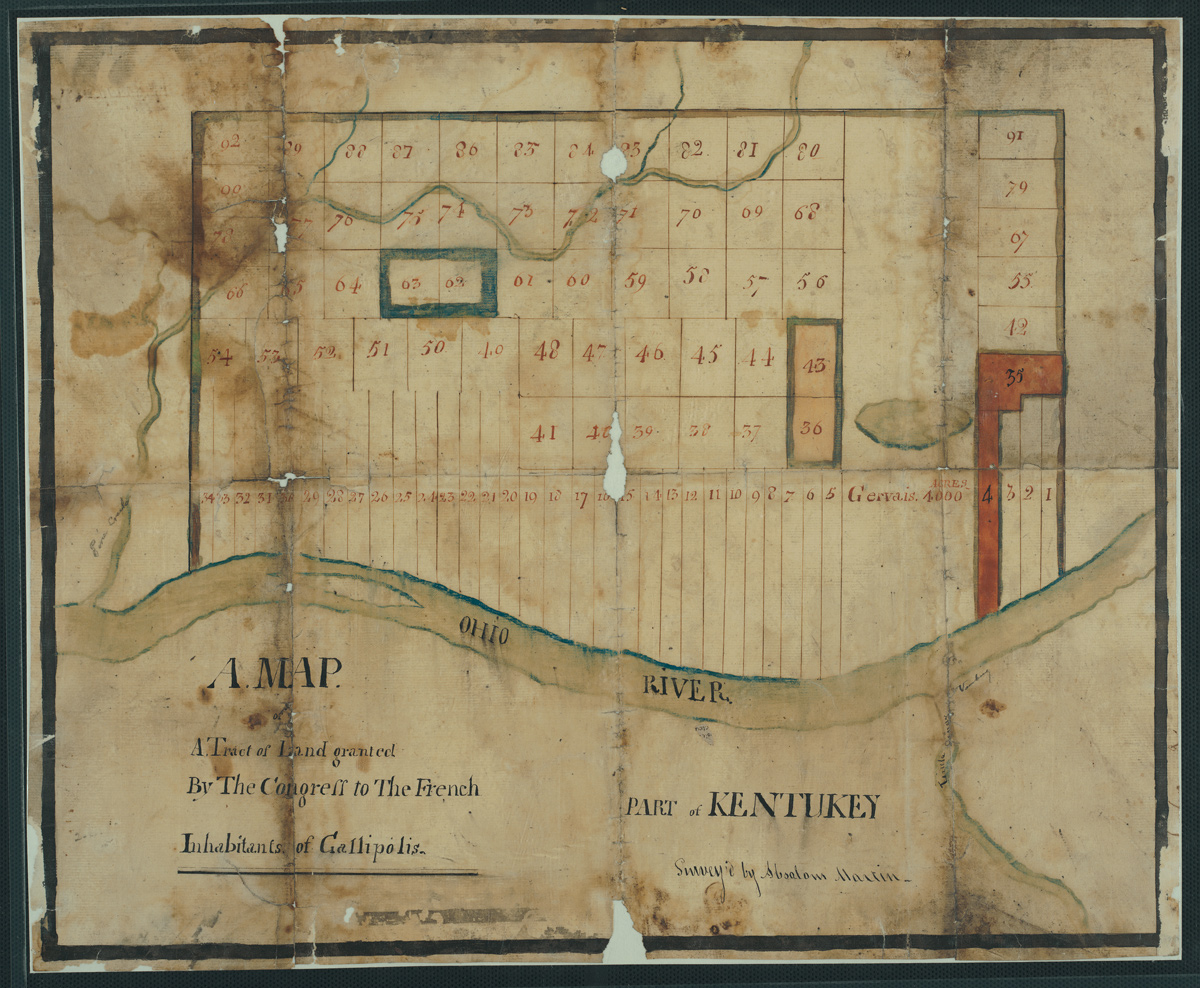Gallapolis, OH or Point Pleasant, WV Lewis stopped writing in his journal on this day, but we know he is between Letart Falls and Cincinnati. Thomas Rodney has been following Lewis by a little more than a week and from his diary and Cramer’s 1802 river guide, The Navigator, we can reasonably assume that Lewis reached, or was near, Point Pleasant or Gallipolis on this day.
Figure 1
Battle Monument at Tu-Endie-Wei State Park
© 2007 by Brian M. Powell. Permission via the Creative Commons Attribution-Share Alike 3.0 Unported license.
Camp Point Pleasant at the mouth of the Kanawha River was established by Colonel Andrew Lewis (1720–1781) after his Battle of Point Pleasant victory in 1774. Part of Lord Dunmore’s war, the battle pitted roughly equal forces of Virginia militiamen against Shawnee and Mingo warriors. The site continued as a military establishment of various types for many years. Today, monuments, markers, and a reconstructed fort can be visited at Tu-Endie-Wei State Park.[1]Point Pleasant, West Virginia, https://en.wikipedia.org/wiki/Point_Pleasant,_West_Virginia, accessed on 30 December 2018.
High Water Line
There is a large cillender faced single rock a little way below it on the same side of the river. I observed by leaves hung on the bushes near that the Ohio some times swells to the top of this rock, which must be at present 25 or 30 ft. above the water . . . .
—Thomas Rodney[2]27 September 1803. Dwight L. Smith and Ray Swick, ed., A Journey Through the West: Thomas Rodney’s 1803 Journal from Delaware to the Mississippi Territory (Athens: Ohio University Press, 1997), … Continue reading
Point Pleasant
The town of Mount Pleasant contains only 8 or 10 houses logged and framed and look but mean for such a place. Here Du[n]more was in 1774, and here General Lewes had a battle with the Indians. Many bones still remain but slightly burried and here was once a large town of the Indians extending, Pryor says, 3 miles up the Ohio from the Cawhawah. There is still great evidence of this.
—Thomas Rodney[3]28 September 1803, Smith and Swick, 82. Lewis (Rodney’s Lewes) and Rodney’s Pryor are not Meriwether Lewis or Nathaniel Pryor of the Lewis and Clark Expedition.
Sickly Gallipolis
About a mile or more down below Canhawah we reached the uper end of Galliopolis Island a pretty large island a mile and a half or two miles long. There is a riffle at the uper and lower end of this island and a rapid from one to the other. [B]ack of the town a little way the country appeared sunken and low and the place is said to be sickly.
—Thomas Rodney[4]Ibid., 82–83.
The long, narrow lots shown in Fig. 2 were common in settlements founded by Canadiens, called simply the “French” by Americans in 1803. The narrow shape allowed families to have access to the main transportation route, the river, and still have enough land to manage their home. Other examples of early cities with narrow lots include Detroit and Green Bay.[5]Robert Foxcurran, Michel Bouchard, and Sébastien Malette, Songs Upon the Rivers: The Buried History of the French-Speaking Canadiens and Métis . . . (Quebec: Baraka Books, 2016), 303.
Notes
| ↑1 | Point Pleasant, West Virginia, https://en.wikipedia.org/wiki/Point_Pleasant,_West_Virginia, accessed on 30 December 2018. |
|---|---|
| ↑2 | 27 September 1803. Dwight L. Smith and Ray Swick, ed., A Journey Through the West: Thomas Rodney’s 1803 Journal from Delaware to the Mississippi Territory (Athens: Ohio University Press, 1997), 78. |
| ↑3 | 28 September 1803, Smith and Swick, 82. Lewis (Rodney’s Lewes) and Rodney’s Pryor are not Meriwether Lewis or Nathaniel Pryor of the Lewis and Clark Expedition. |
| ↑4 | Ibid., 82–83. |
| ↑5 | Robert Foxcurran, Michel Bouchard, and Sébastien Malette, Songs Upon the Rivers: The Buried History of the French-Speaking Canadiens and Métis . . . (Quebec: Baraka Books, 2016), 303. |


